Daily Mail journalists select and curate the products that feature on our site. If you make a purchase via links on this page we will earn commission – learn more
You’ve likely already heard that, according to ongoing studies, our phones are germier than a toilet seat. And whether or not you believe these reports, chances are your phone could use a cleaning.
Think about it — it’s likely your most used device, so ask yourself (honestly), when was the last time you cleaned your phone?
There’s no need to feel guilty if it’s been a while, but considering that most folks take their phones everywhere, from the kitchen to read off recipes to public transit, the bottom line is that your phone needs to be cleaned more often than you think, and you don’t have to spend a lot to do so.
Exactly how dirty are our phones?
It’s not a surprise that our phones harbor more bacteria than meets the eye, but several studies have proven that they’re much dirtier than most people think.
A 2017 scientific study found a “high median bacterial count” of potentially pathogenic microbes on high school students’ phones. Neither the phone owners’ genders nor the phone types made a difference in the contamination level found.
Another study conducted by the Economic Times and SellCell found that, during multiple swab tests, 100% of phone screens contained E. coli, bacillus cereus (a bacteria responsible for severe food poisoning), and several other types of bacteria.
How often should you clean your phone?
While deep-cleaning your phone doesn’t have to be a daily habit, wiping it down should, especially when taking into account the multiple surfaces we touch throughout the day before making contact with our phones.
Below, we’ve listed the do’s and don’ts of phone cleaning and what you need to buy to get the job done.
What products are best for daily phone cleaning?
There are a few simple practices you can take to give your phone a thorough surface-cleaning and all you need is a lint-free microfiber cloth and a little bit of water. A couple of extra products come into play when going for a deeper clean.
Different smartphone manufacturers like Apple and Samsung offer the same disinfecting instructions for their devices. Both stress that a microfiber cloth should be your starting point. A camera lens cleaning cloth also works since it’s made of similar material that’s soft and non-abrasive.
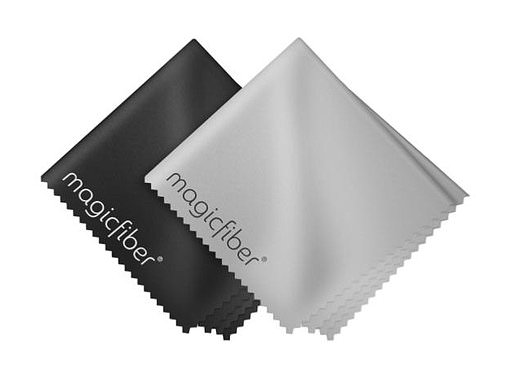
MagicFiber Microfiber Cleaning Cloths (2-Pack)
Using one of these is the safest and most affordable way to clean your phone on a regular basis
Here are the steps recommended by experts and phone manufacturers for thoroughly cleaning your phone:
Step 1: Turn off your phone and make sure it’s powered down and unplugged from any power source.
Step 2: Remove your phone from the case (if it’s housed in one).
Step 3: Use the microfiber cloth to gently remove any smudges or fingerprints from the device. Don’t be afraid to give your camera lenses and the edges of your phone a bit more love.
Step 4: Mix a solution of 70% isopropyl alcohol and water (50/50 or 70/30 works) and apply a tiny bit to your microfiber cloth — enough to gently dampen but not soak it.
Step 5: Give your phone a thorough wipe-down on the front, back and sides, but be sure to avoid any ports and openings.
That’s it!
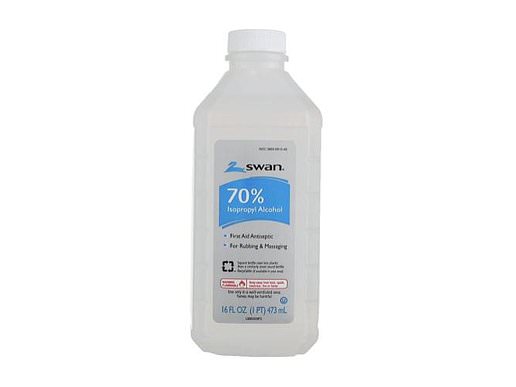
Vi-Jon Swan Isopropyl Alcohol, 70%
Mix a 1:1 solution of aolohol and tap water and apply a tiny bit to the microfiber cloth before gently wiping your phone down
Following the 2020 pandemic, Apple updated its “Cleaning your iPhone” guide, giving the green-light to users who would like to use Clorox Disinfecting Wipes. The tech brand advised that “you may gently wipe the exterior surfaces of your iPhone” with this wipe. However, it only gives approval for Clorox Disinfecting Wipes, specifically.
Any other wipes or cleaning products containing bleach or hydrogen peroxide should be avoided.
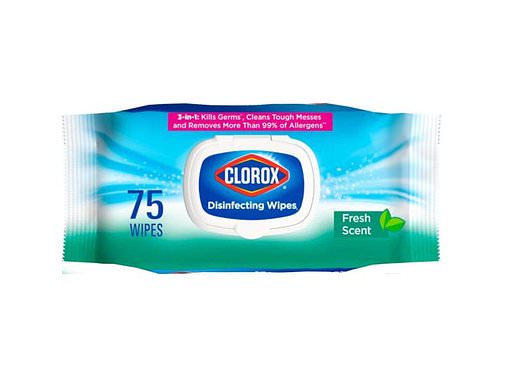
Clorox Bleach-Free Disinfecting Wipes, On-The-Go
According to Apple, these are now safe to use on your phone, but keep in mind that they must be bleach-free
If your phone comes into contact with food, makeup, beauty products, detergent, dirt, sand or anything that may cause stains or damage, follow the same guidelines above to clean your device. But be sure that you remove them as quickly as possible to avoid any stains setting in.
Are there any phone cleaning alternatives?
For more practical daily cleaning, investing in a UV light product is a good option. Though more expensive than the products above, it requires little-to-no effort, does all of the work for you, and, according to research, actually works.
A January 2018 study in the Journal of the American Association for Laboratory Animal Science found that UV-C devices that used 254 nanometers proved to be “an effective non-liquid method for smartphone sanitization.”
Today, there are a few reliable UV-C sanitization options to choose from. The Simplehuman Cleanstation is one of the fastest I’ve tested, sanitizing 99.9% of my phone’s surface in just 30 seconds. To use it, just place your phone in the slot and it automatically lowers for cleaning. Once it’s done, it automatically raises for you to grab.
The opening is large enough to fit my iPhone 16 Pro Max with no issue (with no bulky case attached).
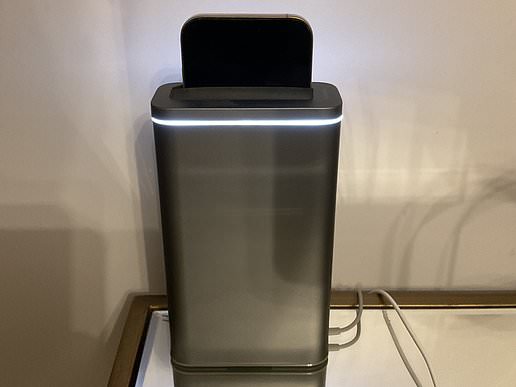
Simplehuman Cleanstation
UV light cleaners are a practical and convenient alternative to sanitizing your phone. Though pricey, they take a lot less effort
The PhoneSoap Basic was the first UV-C phone sanitizer I tested and it’s become a standard within the phone sanitizer space ever since its initial launch. It uses UV-C bulbs and quartz glass to sanitize 99.99% of germs on your phone’s surface. To use it, all you have to do is raise the cover, place your phone inside, and close it. The process starts automatically.
This device, however, takes a bit longer than the Simplehuman Cleanstation to complete the sanitization process, coming in at a 10 minute disinfection cycle.
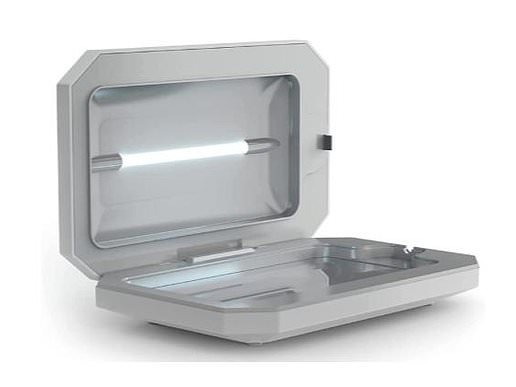
PhoneSoap Basic Cell Phone UV Light Sanitizer Box
This UV-C phone sanitizer is one of the first to start the craze and is said to kill 99.99% of germs on your phone’s surface, from all angles
What to avoid when cleaning your phone?
Now that you’re fully familiar with the correct way to clean and disinfect your phone, here are a few products and practices to avoid:
Keep your phone out of the bathroom: According to a 2018 study in Bank My Cell, three in four Americans habitually use their phones to call, text or scroll on social media while using the restroom. Since the bathroom is a breeding ground for bacteria, it’s best to keep your phone out of that environment, if you can help it.
Hand sanitizer: Never use hand sanitizer to clean your phone or any of your electronic devices as it often contains fragrances and ethyl alcohol that can permanently damage electronics.
Compressed air: While this is used to sometimes release dirt and debris from keyboards, it is not recommended for cleaning phones since the pressure can cause irreparable damage to your microphone. Apple also specifically advises against using compressed air on iPhones.
Paper towels: Since these are usually textured, they can leave scratches on your screen, especially if you’re using force. Instead, stick to microfiber cloths — they keep your phone scratch-free and leave no debris behind.
Glass and household cleaners: These products are often packed with chemicals that can strip the coating on your phone’s screen, leaving the device vulnerable for scratches.
